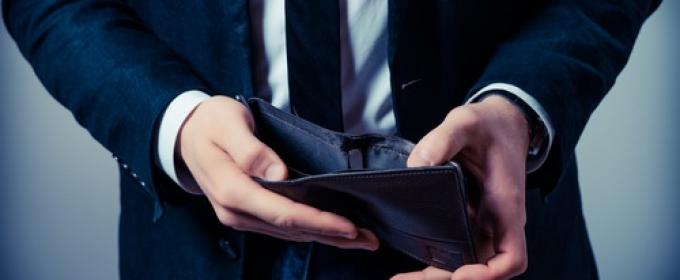
Going through a bankruptcy can be painful, but the bankruptcy itself usually isn't what causes all the ulcers and sleepless nights. Those often arrive in full force after the bankruptcy is finalized and you're trying to repair your damaged credit. The process can be infuriating! Fortunately, the mantra "time heals all wounds" directly applies to rebuilding your credit as well. Of course, that doesn't mean you should just sit back and do nothing to improve your financial situation, so let's discuss a few of the practical methods you can use to rebuild your credit after bankruptcy.
Get a Credit Card for Bad Credit
It's important to not completely give up on credit. You can't have great credit again without proving you can actually manage credit wisely, so find a way to get yourself a new credit card and begin building positive payment history as soon as possible. Almost any credit card will do. There are a number of credit cards for bad credit which are specifically designed to help you rebuild your credit worthiness in the eyes of lenders. When you obtain one of these new cards, be sure you're able to make your payments on time and in full every month. When I say "almost" any credit card will do, there is a caveat: some bad credit credit cards are certainly better than others, so do your research online and make sure you make an educated decision. Look for cards with low annual fees that offer somewhat reasonable credit limits, like the First Progress Platinum Prestige Secured MasterCard.
Get a Secured Credit Card
If you can't seem to get approved for a regular "unsecured" credit card, start comparing secured credit cards as well. Contrary to what some may believe, secured credit cards are not your worst option if you're attempting to rebuild credit. These cards simply use a bank account as collateral against the limit on your plastic, so it's a way for lenders to cover the additional risk of extending credit to someone they deem a bit less creditworthy. In return, most secured cards will report your payment history to all 3 credit bureaus so it's a win-win solution. Once you've managed to drag yourself out of the bad credit sink hole through rebuilding positive payment history, you may be able to upgrade your secured credit card to a credit card for fair credit. Generally such cards offer better rates and fees and will continue to help you build solid credit history. If you want to get really guerrilla, you could also look into getting a gas or retail credit card as an additional way to build positive payment history again. They may not sound glamorous, but gas and retail credit cards aren't treated any different than regular credit cards by credit-scoring models.
Secure a Personal Loan
Another creative way to rebuild credit after bankruptcy is to take out a personal loan from your bank and simply put the money in an online savings account. Then make payments on the personal loan using the money in the savings account until it's completely paid off. Depending on the interest rate spread you receive, it shouldn't cost you too much, and this is a great way to build positive payment history on your credit reports with little risk.
Take a Break from Credit
Lastly, if you've determined you have absolutely no self control when it comes to credit, consider going credit free for a few years. It may help with your stress levels, especially if you're one who tends to rack up credit card bills with abandon. Eventually, time will heal your bad credit as negative marks, including the bankruptcy, should fall off your credit reports within 10 years. While your credit reports may eventually be clean again, remember that this doesn't necessarily correlate to good credit. To improve your FICO credit scores, you'll need to take some of the steps above to build positive payment history and prove that you deserved the second chance your bankruptcy provided.
Photo credit: Shutterstock / Champion studio








Comments
Dear Editor,
I just wanted to say thanks for using my flickr/creative commons photo in your blog post. As it is noted below my photo on flickr, I require attribution in the form of a link to my site www.seniorliving.org (versus a link back to flickr) if you use my images. I would really appreciate it if you would make the correction.
Thanks,
Ken Teegardin
Ken Teegardin, you don't own that image and others that appear on your Flickr page.
We've identified the original stock photo photographers who are the owners of the images and contacted them with your details. The editor on this site can search iStock.com and find this photo and many more in the series which you claim ownership of.
It's not appreciated that you're posing at the original owner of that photograph when you're not. You've managed to scam many site owners to link to your site just to boost your search engine rankings. We've contacted a Google representative and reported your SEO black hat scheme to them.
I'm confused at this post. How does one pay off a bank loan from a CD when the CD is intended to be a term-CD (meaning not drawn from, plus a penalty for early withdrawal) ? Btw, interest on CD's is at an all-time low, which makes them essentially worthless (unless one can afford to invest 10-100K into a long-term CD, but how many average middle class workers can afford that in this economy?)
Thanks for catching the author's error Kristi. We've corrected the post to recommend using an online savings account instead. Of course, interest rates for both online savings accounts and CDs are laughable these days, but at least the savings account would provide more flexibility with withdrawals and perhaps even a higher rate.